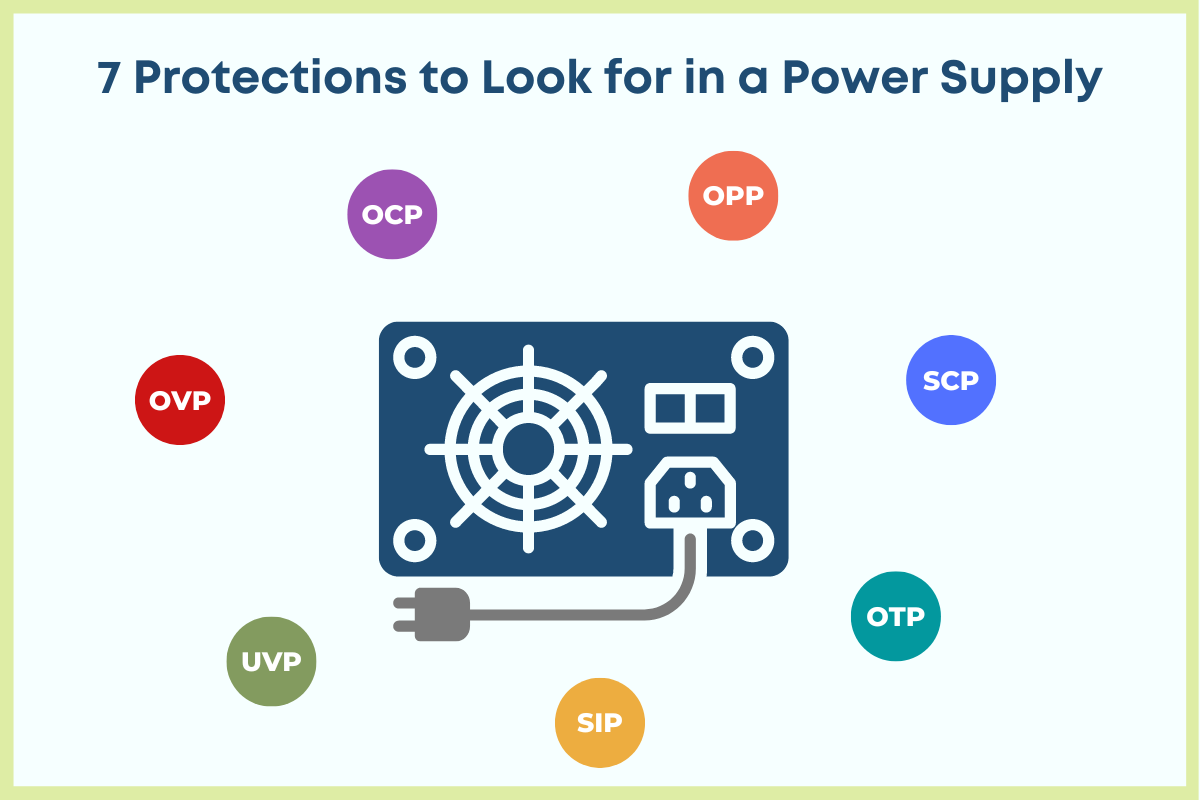Power surges, brownouts, and other unexpected things can threaten your power supply, and with it the devices it powers and the people around it. Components or cables could potentially overheat and melt and may even cause a fire.
That’s why PC-based power supplies come with various protection mechanisms designed to monitor different values and shut the power supply down, if necessary.
#1 Overcurrent Protection (OCP)
Overcurrent Protection (OCP) monitors current levels in the rails and if it goes beyond a set amount, it shuts the power supply down. Like a circuit-breaker in a building, the OCP shuts down the power supply before excess current can melt cables or other components in the supply or the system it’s attached to, or even start a fire.
#2 – Overpower Protection (OPP)
Overpower Protection (OPP) may also be known as Overload Protection (OLP). Like OCP, OPP is an important protection against short circuits and overloads. Where OCP is implemented on the secondary side of the power supply and monitors individual rails, OPP is implemented on the primary side and monitors the overall maximum power that the supply draws. OPP is usually set slightly over the power supply’s rated power capacity, to allow for momentary power spikes. OPP and OCP can be used simultaneously and it’s a good idea to have both.
#3 – Overvoltage Protection (OVP)
Where OCP and OPP measure current, Overvoltage Protection (OVP) measures voltage at a power supply rail. If voltage exceeds a set amount, OVP shuts the supply down.
#4 – Undervoltage Protection (UVP)
Like OVP, Undervoltage Protection (UVP) monitors voltage, but it ensures that the voltage does not drop below a set level. Components require stable voltage levels to operate as designed.
#5 – Short-Circuit Protection (SCP)
Short-Circuit Protection (SCP) measures the resistance on output rails. If it goes too low, indicating a short circuit, the power supply will shut down.
#6 – Over-Temperature Protection (OTP)
Power surges, blocked ventilation, excessive ambient temperatures, fan failures, or faulty components could all cause a power supply to overheat and cause damage. Over-Temperature Protection (OTP) monitors the internal temperature of the supply and shuts it down before damage can be done.
#7 – Surge and Inrush Protection (SIP)
Surge and Inrush Protection (SIP) protect against power spikes. Surge protection guards against any incoming voltage spikes.
Inrush current occurs as a power supply is turned on. Discharged capacitors in the supply allow high currents to flow as they charge up. Until the currents have stabilized to normal levels, inrush protection keeps these initial high currents from causing harm.
Don’t put your medical device, patients, and caregivers at risk. Look for protection features in a power supply for accurate and long-lasting operation and, most importantly, to avoid a damaging, possibly dangerous situation.
________________________
RAM Technologies power supplies come with all seven protections. Contact us for details.



